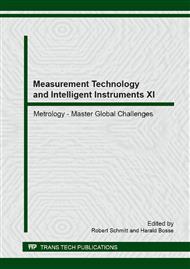p.251
p.259
p.269
p.279
p.288
p.296
p.307
p.317
p.327
Efficient Commissioning Processes for the Automotive Final Assembly
Abstract:
At the so-called End-of-Line of the automotive final assembly the vehicles are commissioned, i. e. single systems as well as functions are checked and/or adjusted. For example, on the roll brake test stand, the parking brake and the driving brake are checked, whereas at the wheel alignment station the wheels are aligned. The commissioning processes are characterized by a high amount of manual work conducted by highly skilled workers with expensive equipment. Furthermore, many of the functions, which are commissioned at the End-of-Line (e. g. adjustment of the switching operation of the automatic transmission), have a high impact on the customers quality perception. Therefore, the improvement of the commissioning processes is a promising method to decrease costs in the automotive final assembly and increase the quality perceived by the customer. This paper presents an approach and in extracts its application that enables its users to improve commissioning processes at the End-of-Line of an automotive final assembly, regarding costs and quality perceived by the customer. The use-case employed in order to demonstrate the approach is the improvement of the steering wheel alignment.
Info:
Periodical:
Pages:
288-295
Citation:
Online since:
May 2014
Authors:
Price:
Сopyright:
© 2014 Trans Tech Publications Ltd. All Rights Reserved
Share:
Citation:


